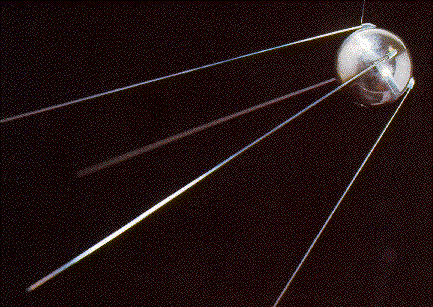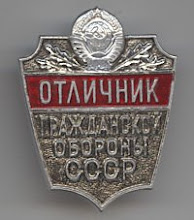"We Communists must place the greatest discovery of the 20th century--atomic energy--in full service of that task, the fulfillment of which is the programmatic goal our Party--the task of building Communism."
--N.A. Bulganin, at the 20th Party Congress
One of the most poorly-remembered aspects of "Atoms for Peace" back in the mid-50s was the way in which the Soviets responded to it. President Eisenhower and his advisors hoped that their proposal for an international nuclear fuel bank would deprive the Soviet weapons complex of fissile material it couldn't spare, and thus restricting the growth of the USSR's nuclear arsenal. Instead, the Soviet Union elected to produce a flood of propaganda demonstrating that the "peaceful atom" really only existed on their side of the iron curtain. Touting the construction in Obninsk of the first nuclear power plant in 1954, two years before Calder Hall in the United Kingdom and three before Shippingport went into service in the United States, as proof of a Soviet lead in civilian applications of atomic energy, Soviet propagandists in the mid-1950s portrayed a world in which socialism and nuclear power combined to alleviate technical and social problems.
Emboldened by this early success, the Communist Party adopted outrageously overambitious goals for their civilian nuclear program during the Sixth Five-Year-Plan (1956-60). As described by a 1956 article in Voennaia znaniia (Military Knowledge):
In the Sixth Five-Year-Plan it is planned to build five large atomic power stations. A large atomic power station will be put into service near Moscow. It will have a 400 thousand kilowatt capacity. Two atomic power power stations with a total capacity of a million kilowatts will be constructed in the Urals.
Altogether in the current Five-Year-Plan atomic power stations will be constructed with a total capacity of 2-2.5 million kilowatts. . . .No capitalist country, including the USA and England, are planning to place atomic power stations of such great capacity into service.
The USSR saw the construction of these plants as a means of fulfilling two goals: firstly, as a means of constructing energy centers in regions lacking local fuel supplies, and secondly, as a "great experiment" in order to determine what reactor technologies would be most economical and advantageous for widespread deployment in the subsequent Five-Year-Plan. According to the article, "up to ten types of reactors" ranging in electrical output from 50 to 200MWe would be developed before 1960. One suggestion was a homogeneous reactor that would use the radiolysis of the fuel solution to power a galvanic cell in addition to a turbine. One of the reactors would use thorium fuel, and might potentially be an aqueous homogenous reactor as suggested by Academician A.I. Alikhanov in Geneva in 1955, producing U-233 from Thorium.
Besides power stations, atomic energy would also be put to use by the Socialist motherland for transportation purposes. One goal for the the Five-Year-Plan was the construction of an atomic icebreaker; this would ultimately see the light of day as the Lenin, entering service in 1959. But this was not to be all; nuclear airplanes and locomotives would also be the objects of intense research and development. It is true that the Myasishchev design bureau made several prospective designs for nuclear-powered strategic bombers in the late 1950s--the M-30 and M-60--but like their American counterparts, these aircraft did not ultimately see the light of day. And while the article stated that "it can be expected that atomic locomotives will travel our railways in the near future," and was illustrated with an elaborate picture of a two-story atomic locomotive quite reminiscent of the one in the 1979 NBC flop Supertrain, no such conveyance ever left the drawing board.
The article concluded that:
Unfortunately, this was not quite the way things turned out. The only item mentioned in the article that actually got completed during the Five-Year-Plan was the icebreaker Lenin. The next nuclear plant to go into service after Obninsk was in Tomsk in 1958; but these were basically plutonium-production reactors for the weapons program that also produced electricity. The civilian reactors (water-graphite in Beloyarsk and light water at Novovoronezh) began construction in 1957 and 1958 respectively, but only entered service in 1964. But little notice was paid to these failures at the time, given another technological marvel grabbed the world's attention:

Our country stands ahead of other countries in the use of atomic energy for peaceful purposes. In the years of the Sixth Five-Year-Plan the Soviet Union will make a great new leap ahead in the development of atomic technology and in the use of the immeasurable energy of the atomic nucleus.



2 comments:
Going to prove that politics and nuclear energy make poor bedfellows whether the politicians support nuclear or not.
On the subject of the Obninsk "AM-1" reactor, you MIGHT be able to get in and visit it on a day off (that is, if you get days off!).
I saw the following blog post a while back showing some interior photos of this first power plant, as well as contemporary newspaper clippings:
http://englishrussia.com/?p=3217
Look at all those ancient nixie-tube counters and panel meters! It's amazing (or scary) that this experimental power plant outlived many of its RBMK progeny and ran until 2002.
Post a Comment